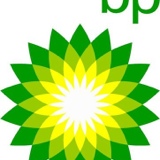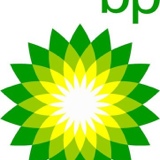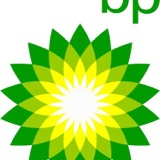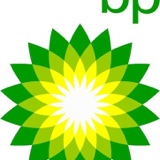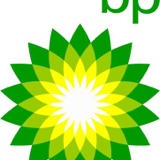Information
-
Document No.
-
Audit Title
-
Client / Site
-
Conducted on
-
Prepared by
-
Location
-
Personnel
Section 1: Leadership
-
1.1 Does the company have a policy statement reflecting managements commitment to HSE, which is clearly disseminated through displayed policies in manuals?
-
1.2 Has an HSE coordinator been appointed who reports directly to senior management?
-
1.3 Is there a reference manual that communicates management policies and practices?
-
1.4 Are annual HSE objectives established for the company?
-
1.5 Are personnel aware of HSE objectives?
-
1.6 Are HSE objectives being met?
-
1.7 Are there formal tours and inspections by management personnel?
-
1.8 Does the company have periodic major HSE audits or surveys?
-
1.9 Is there a structured follow up system that establishes priorities for follow up actions, identifies critical items to be corrected, establishes time frames for corrections, and assigns responsibility to ensure that corrective action is taken?
-
1.10 Have recommendations from previous major audits or surveys been completed?
-
1.11 Does the company have a drugs and alcohol policy?
-
1.12 Does the company operate a policy for safe use of electrical items whilst on company business? e.g. Mobile phones and computers.
Section 2: Staffing Levels
-
2.1 Are there sufficient qualified personnel available at each inspection site to operate in a safe and effective manner?
-
2.2 Is there an organisational chart?
-
2.3 Are there individual job descriptions available?
Section 3: HSSE and Occupational Health
-
3.1 Does the company ensure that inspectors operate under a formal work permit system, especially when operating at the ship/shore interface or when engaged in confined space entry?
-
3.2 Are formal risk assessments carried out for all inspection tasks conducted at the regional sites with Method Statements developed for complex jobs?
-
3.3 Are portable devices available to test for flammable gas, oxygen and hydrogen sulphide?
-
3.4 Are portable gas testing devices calibrated regularly and verified before use?
-
3.5 Does the company hold a library of relevant MSDS?
-
3.6 Is access to the office controlled and does the site have adequate fire/smoke alarms and fire extinguishers?
-
3.7 Is there a system for investigating and following up HSE incidents on inspection sites?
-
3.8 Have all inspection scenarios been examined to identify and evaluate all occupational health hazards?
-
3.9 Is there evidence that the following types of controls are being applied for identified hazards as appropriate: a) Engineering b) Procedural c) PPE
-
3.10 Does the inspection office have access to a qualified health professional?
-
3.11 Are employees given periodical medical examinations?
-
3.12 Is there a qualified first aider on site at all times?
-
3.13 Are there adequate HSSE Bulletin boards displayed in the company offices?
-
3.14 Are there regular HSE meetings involving inspection management and staff?
-
3.15 Are the meetings formalised and documented? (With an agenda and minuted)
Section 4: Training and Certification
-
4.1 Has a systematic approach been adopted to identify all employee training needs?
-
4.2 Has the inspection operation been accredited against an internationally recognised standard?
-
4.3 Is there a specific inspection operations and training manual?
-
4.4 Have training courses been established to meet the cargo inspectors training needs?
-
4.5 Have all inspectors received IFIA training and certification?
-
4.6 Are inspection training needs reviewed regularly to meet changing customer needs and/or changes to equipment or operational practices?
Section 5: Accident and Incident Reporting
-
5.1 Is there an accident/incident/non conformance investigation system?
-
5.2 Does the investigation procedure require that injuries, occupational illnesses, non conformance, property damage, environmental damage/complaints, security breaches and near misses be reported?
-
5.3 Is there a designated safety officer/representative who has received formal training in accident/incident investigation and reporting?
-
5.4 Is there a standard form for accident/incident investigation?
-
5.5 Are safety statistics maintained for employees?
-
5.6 Are safety statistics maintained for contractors?
-
5.7 Is there a system being used by appropriate personnel which ensures that remedial actions and follow up of these actions are carried out as recommended in the accident/incident report?
-
5.8 Are lessons learned shared through the organisation?
Section 6: Management of Change
-
6.1 Are systematic reviews used to identify hazards and assess risks associated with change - i.e. new and modified facilities and operating procedures?
-
6.2 Are client instructions maintained?
-
6.3 Are industry standards maintained?
-
6.4 Are inspectors aware of BP requirements (RIICS)?
-
6.5 Are relevant regulations, codes and industry standards periodically reviewed to ensure compliance?
-
6.6 Is there a documented process for management of change?
Section 7: Facilities and Operation
-
7.1 Does the inspection office have any sort of traceability with respect to field equipment proving and maintenance?
-
7.2 Are the periods of calibration for all measurement equipment comparable with a) National Standards b) BP measurement standards?
-
7.3 Are there records of measurement equipment issued to inspectors, their calibration status and evidence of periodical checks?
-
7.4 Are there records of calibration of measurement equipment and records of destruction for non conforming equipment?
-
7.5 Is the system for calibration of measurement equipment effective?
-
7.6 Is the measurement equipment in good condition and stored in a suitable manner between use?
-
7.7 Does the office have all the relevant industry standards available to the inspectors and is there an effective document control system in place?
-
7.8 Has the company obtained all licences required to operate?
Section 8: inspection Equipment
-
8.1 Type of level measuring equipment?
-
8.2 Type of temperature measurement equipment?
-
8.3 Type of open sampling equipment?
-
8.4 Type of closed/restricted sampling equipment?
-
8.5 Is the inspection equipment in accordance with RIICS?
Section 9: Sample Storage
-
9.1 Is there a system for registering samples?
-
9.2 Is the period of sample retention in accordance with client instruction?
-
9.3 Are fire extinguishers available and in date?
-
9.4 Are samples stored systematically for ease of retrieval and disposal?
-
9.5 Are samples disposed in accordance with company policy or state regulations?
-
9.6 Is the sample storage separate from the main office building?
-
9.7 Are the spill containment contingencies adequate for the volumes of stored samples?
-
9.8 Is the Sample store fitted with explosion proof lighting?
-
9.9 Are the stores adequately ventilated and temperature controlled?
-
9.10 Are hydrocarbon gas levels monitored or is a system in place to prevent the release of hydrocarbon vapours?
-
9.11 Has the local fire department been advised of sample store contents?
-
9.12 Is the storage robust?
Section 10: PPE - Personal Protective Equipment
-
10.1 Is there a personal protective equipment programme?
-
10.2 Does the programme include PPE selection and standards (in compliance with company, national or international requirements)?
-
10.3 Does the programme include responsibilities for advising, purchasing,distributing and managing PPE?
-
10.4 Does the programme include procedures for purchasing, issuing, checking, maintaining and managing PPE and PPE training?
-
10.5 Are general inspection policies clearly defined in terms of area (PPE zones) and occupational requirements?
-
10.6 Are PPE rules observed and implemented by inspectors undertaking cargo inspections?
-
10.7 Are employees given proper fitting for PPE requiring special attention, such as respirators and eye protection?
-
10.8 Where breathing apparatus is supplied, is it of the positive pressure type?
-
10.9 Is the breathing apparatus in good working condition?
-
10.10 Have the inspectors been trained in the use of the supplied breathing apparatus?
-
10.11 Have the inspectors been made aware of the dangers of confined spaces, static electricity and toxic gases through specific training?
-
10.12 Are Nomex/ FRC coveralls/uniforms mandatory for each inspector?
-
10.13 Are there periodical inspections of PPE?
-
10.14 Does the company supply personal H2S monitors to the appropriate staff?
Section 11: Communications
-
11.1 Is communication between the inspection office and clients, effective and reliable?
-
11.2 Is there a formalised route for communicating product quantity and quality issues to the client (both within and outside of office hours)?
-
11.3 Prior to the start of an inspection even, is the inspector given a copy of all relevant instructions for quality and quantity requirements?
-
11.4 Is the inspection report completed and despatched in a timely manner?
-
11.5 Does the office complete the input data into GCAS?
-
11.6 Are HSSE issues part of client communication?
Section 12 Other Comments and Information
-
Add signature
-
Select date
